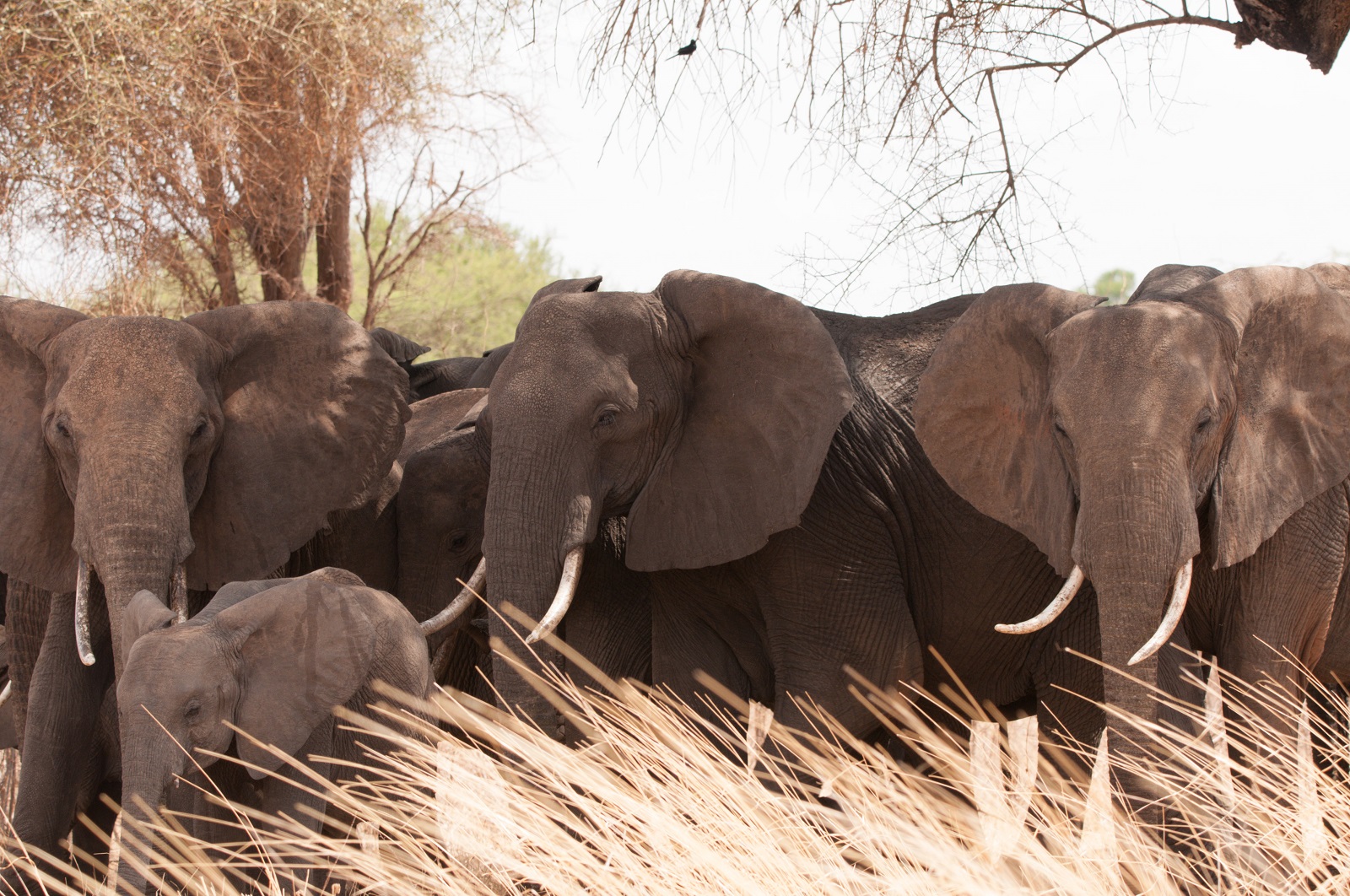Tracking giants
28 December 2021
TRACKING GIANTS
Headed by Newton Simiyu, Born Free’s newly appointed elephant conservation team is hard at work in Meru National Park, Kenya.

Saving Meru’s Giants is Born Free’s major new conservation initiative, and we are determined to investigate and address the threats facing elephants and giraffes in this remote national park in Kenya. Here in our charity’s homeland, where Elsa the lioness was returned to the wild, our field team is currently collecting data on elephants – driving around each day, scanning bushes for individuals.
Elephant tracking
We make note of group structure – whether families, bachelor herds or lone bulls, recording their general activity, and the habitat they were found. The team is careful to take clear pictures of each elephant’s right and left ear. We then assign each individual with a unique ID code, based on ear features – such as notches – as well as tusk shape. As families and herds are identified they are given a name relating to the first place they were sighted, for example the Acacia Family, located in an area dominated by acacia woodlands.
Tracking elephants is essential. The data collected will help the team better understand potential threats these giants face, come up with long-term mitigation strategies and implement community-led and nature-based solutions. The overall objective is to promote coexistence between local people and elephants, whilst addressing and reducing conflicts. It is, therefore, vital to have accurate information on elephant numbers, movement patterns and geographical range. We aim to develop a robust elephant ID database for all individuals within the Meru Conservation Area.
Our next step is to develop elephant surveys with methods including line-transect surveys, dung and track counts, aerial surveys, and camera trap surveys. These will enable us to monitor population dynamics and inform conservation actions.
Meet the Acacia Family
Our first family to be identified, the herd has 19 individuals comprising cows, sub-adults, and juveniles. This family is found around the Leopard Rock and Bwatherongi Plains and their preferred resting spot is at the Fisi campsite, dominated by acacia woodlands. Here they can make the most of cooler air away from the afternoon’s scorching sun. They are led by the matriarch ‘Tortilis’ – named after a dominant acacia tree species in Meru – an experienced older female who guides the family in their daily activities. Other members of this family we have identified are ‘Nilotica’, ‘Kirkii’, ‘Abyssinica’ and ‘Senegal’.
We are committed to keep tracking every individual in this family to understand their behaviour to assess and reduce threats.
Our current appeal to Save Africa’s Giants will expand on the vital work in taking place in Meru, and extend extra protection to elephants and giraffes living within the park.
